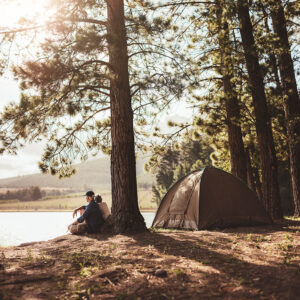Dry Ice for Camping and Road Trips: A Cooler Alternative

Dry ice is a great option when you need to keep food and drinks cool for camping or road trips.
If you’re planning your next outdoor adventure, whether it’s a weekend camping trip or an extended cross-country road journey, keeping your food and drinks cold is essential. Traditional ice can only do so much—and it often leaves behind a soggy mess. That’s where dry ice for camping and road trips comes into play. As a powerful cooling agent that doesn’t melt into water, dry ice is the smart and efficient choice for keeping perishables cold and safe on the go.
Why Choose Dry Ice for Camping and Road Trips?
Unlike regular ice, dry ice is made from carbon dioxide and turns directly into gas as it warms, leaving no liquid residue. This makes it a perfect solution for maintaining cold temperatures inside your cooler without the mess. We have a few reasons why dry ice for camping and road trips is becoming the preferred choice for adventurers.
Longer Cooling Power
Dry ice has a surface temperature of -109.3°F (-78.5°C), significantly colder than regular ice. This means it can keep your food frozen or chilled much longer. For multi-day trips, dry ice is ideal because it can maintain subzero temperatures for extended periods with the right storage.
No Meltwater Mess
With traditional ice, you end up dealing with a slushy pool at the bottom of your cooler. Not only is this inconvenient, but it can also cause water damage to food packaging or contaminate your meals. Dry ice evaporates (sublimates) into carbon dioxide gas, leaving your cooler—and your food—completely dry.
Efficient Cooler Packing
Using dry ice allows for more efficient cooler packing. You can place dry ice blocks or pellets at the top, bottom, or throughout your cooler, depending on what you’re trying to freeze or keep cold. Many campers use a combination of dry ice and regular ice to create different temperature zones within one cooler.
Food Safety and Preservation
Keeping food at a safe temperature is crucial when you’re out in nature without access to refrigeration. Dry ice helps maintain USDA-recommended cold storage temperatures, reducing the risk of spoilage and foodborne illness during your trip.
Great for Specialty Uses
Dry ice isn’t just for keeping steaks and drinks cold. It’s also great for making ice cream, flash-freezing fish or game, and even keeping medications or temperature-sensitive supplies cool. It’s a versatile tool for both fun and practicality on the road.
How to Use Dry Ice Safely
While dry ice for camping and road trips has clear benefits, it must be handled with care:
- Ventilation: Never store dry ice in a completely airtight container. As it sublimates, it releases carbon dioxide gas, which can build up pressure. Always keep coolers slightly vented.
- Handling: Wear gloves or use a towel when handling dry ice to avoid frostbite or burns.
- Placement: Position dry ice above or below the items you’re trying to keep cold, depending on your goal. Cold air sinks, so placing dry ice on top can help keep everything chilled evenly.
- Storage: Use an insulated cooler and avoid placing dry ice in the passenger area of your car for long periods. CO₂ gas can accumulate in enclosed spaces.
Pro Tips for Road Trippers and Campers
- Pre-freeze or chill your food and beverages before adding them to the cooler.
- Separate perishables from non-perishables in different coolers.
- Use dry ice for deep freezing and regular ice for items that just need to be cold.
- Don’t forget to plan for disposal—most dry ice will sublimate completely if left in a well-ventilated area.
Dry Ice For All Your Needs
Dry Ice Corp is the largest regional supplier of dry ice and related products in the Northeastern United States. Our ice is fresh and delivered right to your doorstep. We are happy to help you determine the best way to ship your goods, whether you have a huge amount of cookies or a single pie, and help you select the perfect amount of dry ice for the job. Give us a call at (201) 767-3200 or contact us online for a quote. To connect with us online, be sure to follow us on Facebook, Pinterest, and Twitter.



